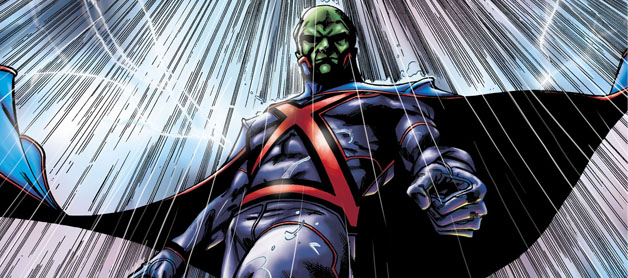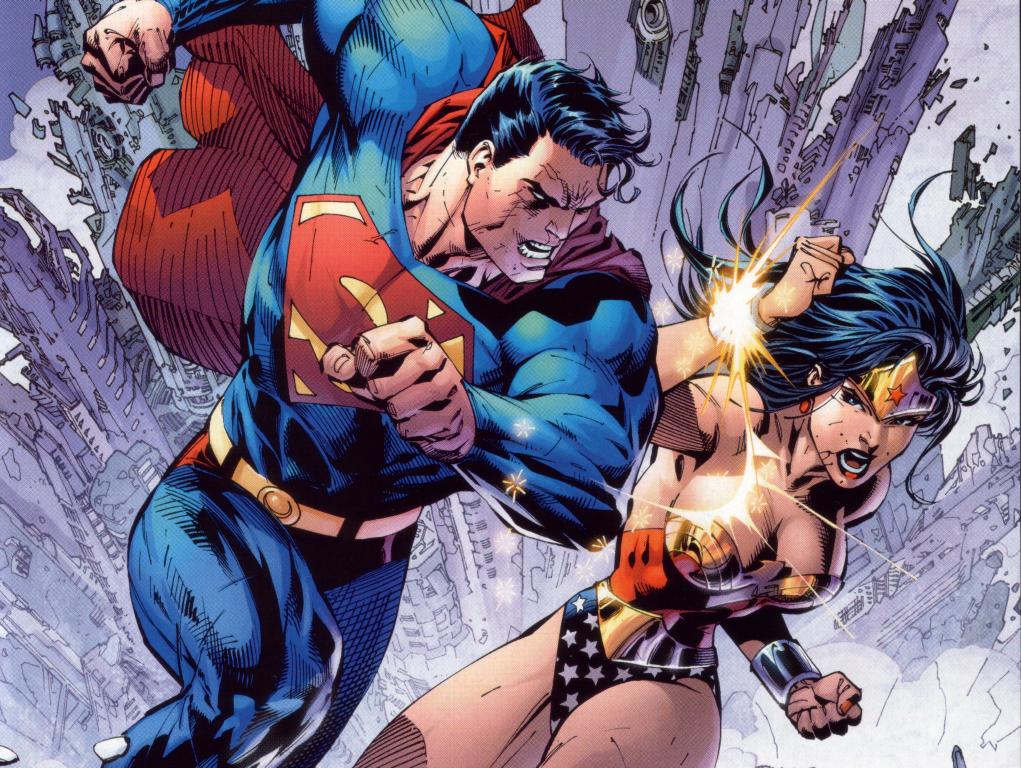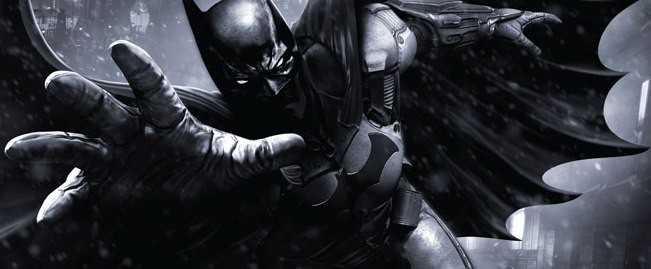Genre: Action (Superhero)
Premise: When superheroes start inexplicably losing their powers, Batman realizes that a secret project of his is the cause.
About: Before George Miller made Fury Road, he was going to make a Justice League movie back in 2008. That would’ve been right after Spiderman 3 and Superman Returns, but before any of the Marvel movies. The cast had someone named D.J. Cotrona playing Superman, Armie Hammer playing Batman, Adam Brody playing The Flash, and Common playing Green Lantern. Factors such as the writer’s strike and the studio being gun shy contributed to the project’s implosion, but there will be a documentary about the almost-film coming out next year.
Writers: Michele and Kieren Mulroney
Details: 127 pages – 2007 draft
Ever since George Miller reminded everyone that, yes, he does still know how to make awesome movies, everyone’s been talking about two things. The sequel to Fury Road and the aborted Justice League script Miller penned seven years ago.
Miller’s particular attention to detail (storyboard-fu!) tells us his Justice League would have looked amazing. But what about the script he was working from? Marvel still hadn’t hit the scene yet and superhero films, at the time, were on the decline. People weren’t sure how to make them anymore.
Did Miller’s writers infuse the genre with the same freshness he added to his post-apocalypse film? Let’s find out…
Justice League begins when someone named the Martian Manhunter(?) comes down with a bad case of being on fire. Since I’d never heard of the Martian Manhunter before, I didn’t know if this was a good thing (his superpower?) or a bad thing. I went with “bad thing” and hoped for the best.
Later we meet Aquaman, who’s all of a sudden afraid of water, and then Green Lantern, who’s temporarily gone blind. The world’s superheroes realize they’re being targeted, so the king of them all, Superman, suggests that they run off to his Fortress of Solitude where they’ll be safe.
Joining up with Wonder Woman and The Flash, the still-healthy heroes start trying to figure out what’s happened to their crime-fighting buddies. Little do they know that back in Gotham, Bruce Wayne is fiddling around with his secret pet project, a satellite called the “Brother Eye,” when he realizes that someone has gotten a hold of it and is using it for no good!
Here’s where things get a little confusing. Somehow, Brother Eye has sent down an army of nano-bots to earth and is using them to invade the orifices of superheroes so it can take away their powers. When Batman realizes this, he heads to the Fortress of Solitude to fess up about his experiment-gone-bad (hey, this is starting to sound a bit like that other superhero movie that came out earlier this summer).
Superman is pissed at Bats, but they don’t have time to argue. They must formulate a plan to stop this evil Satellite-Nano thingy from killing them off. They eventually tie the satellite malfunction to a pissed-off dude named Maxwell Lord, who’s seriously upset that when he was a little kid in need, none of the superheroes came to save him. Talk about holding a grudge.
Once the superheroes arrive, Lord enacts his final plan, which involves a biker gang infused with his nano-tech. Biker Nano Tech Unite become what sound like versions of that Spider-Man villain, Octopus, and start beating our superhero team’s asses. Our caped crusaders will have to draw on every last remaining power they have to defeat Mr. Lord. But with mind altering nano-tech coursing through their brains, they’re soon fighting against each other, leaving the future of super-humans, and earth itself, in doubt.
In all fairness, to do this script justice, it really should be reviewed by a comic book geek. I like myself a good superhero movie, but the geekier and less realistic they get, the less I’m on board. This one had me scratching my head early on, and I never quite caught up with the premise. I felt a bit like a grandparent watching their grandson play with an Ipad for the first time. Like, “Whoa, what is that??”
To me, the best superhero films are the ones that have a clear and simple story (Iron Man). Where superhero films have run into trouble is when they try to do too much. This problem is magnified in these “Group Superhero” films. The movies seem to be less a natural unfolding of events and more writers desperately trying to wrangle together 20 different ideas.
As we all know, the most boring part of any movie-going experience is exposition. When the script stops for 3 minutes, 5 minutes, 10 minutes, to explain what’s going on, that’s 3, 5, 10 minutes where we’re not enjoying a story.
And if you have to set up 8 different superheroes, you’re going to have a lot of those moments. One of the reasons the Marvel movies have been able to thrive is because they’ve taken care of all that exposition in their standalone films, so that once the heroes come together, they can just get on with it.
At least with this version of Justice League, that’s not the case. And the Mulroneys do their best under the circumstances, but when you’re saddled with setting up a man who lives under the sea and rides on dolphins, that’s going to take some time. And then after that, you have to explain why a man looks like a rock-person from Mars. And then after that, who this Wonder Woman chick is.
But even when the script isn’t setting things up, it’s still struggling to move. The Mulroneys make the curious decision to have the superheroes run away to the Fortress of Solitude. Should superheroes really be running away from anything? That doesn’t sound very super-heroic like (although I guess Mad Max and Furiosa ran away the whole movie and that worked).
Even if you cut the script slack there, though, once they’re at the Fortress of Solitude, they stand around for an entire 25 pages(!) discussing what might be wrong with them. A 25-page talky scene with superheroes?? Shouldn’t superheroes be out there superheroing? Isn’t that what we’re expecting when we’re coming to a superhero all-star movie? From the man who brought us the longest chase scene in the history of cinema, you’d think he’d be on board with that.
In the writers’ defense, I don’t know many screenwriters who could have done better. These kinds of projects are screenwriter traps. They seem like they should deliver pure awesomeness. But the formula is working against the screenwriter almost from the get-go – having to set up tons of very unique people and build a non-cliché superhero “end of the world” storyline while it’s happening to boot.
It’s so much easier to build a story around a single superhero. This is what movies do best (work with a single protagonist) and any time you try to get cute with that formula, you can expect problems. Unfortunately, Justice League wasn’t able to avoid these problems and ended up being a lot of exposition, a lot of standing around, before a final climax that was big on action but short on originality.
For the geeks out there, I can pass along a few interesting tidbits. Flash has sex with his wife by vibrating at a really high frequency and then invading her body. Superman fights Wonder Woman as well as “Green Superman,” which comes from Green Lantern’s ring. And after Batman kills our bad guy, Superman becomes furious and says, “We never – NEVER! – take a human life. It’s unacceptable.” Oh, and one of the key superheroes dies, which results in all of our superheroes wearing their costumes in pure black.
I don’t think anyone’s cracked the code on how to do these films right yet. The closest anyone’s come is Avengers 1, and it’s only because they cheated by setting up their superheroes ahead of time. I predict we’ll see these same problems play out in Batman vs. Superman, although I hope I’m wrong!
[ ] what the hell did I just read?
[x] wasn’t for me
[ ] worth the read
[ ] impressive
[ ] genius
What I learned: Just know that the more characters you add to your main cast, the more time you’re going to be spending setting those characters up, which delays us getting to your story. To make character set-ups less boring, try to introduce them involved in some action, or some problem they have to solve. These scenes play less like “set-ups” than, say, showing your character get ready for work with his family. In fact, if you do them well, you can trick your audience into not realizing you’re setting up a character at all.




